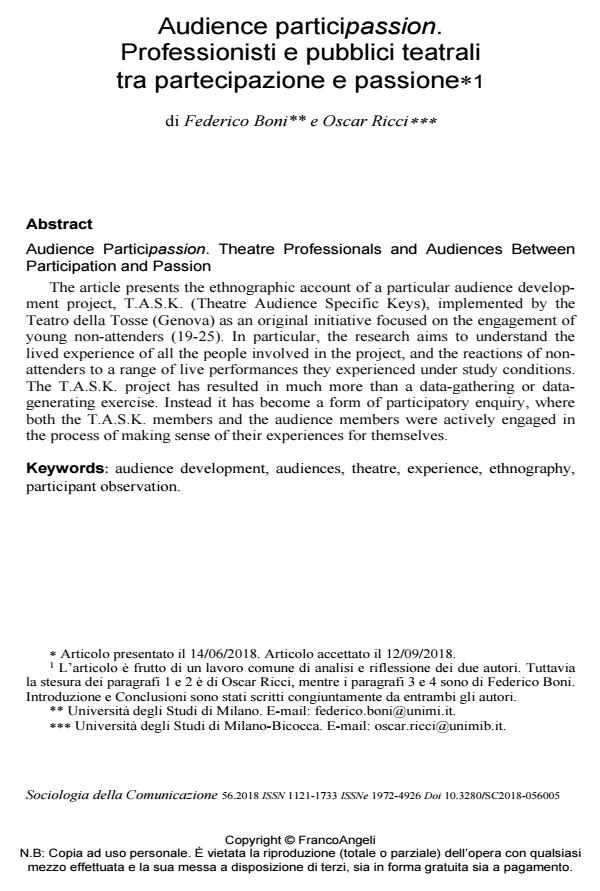Audience Participassion. Theatre Professionals and Audiences Between Participation and Passion
Journal title SOCIOLOGIA DELLA COMUNICAZIONE
Author/s Federico Boni, Oscar Ricci
Publishing Year 2018 Issue 2018/56
Language Italian Pages 17 P. 65-81 File size 243 KB
DOI 10.3280/SC2018-056005
DOI is like a bar code for intellectual property: to have more infomation
click here
Below, you can see the article first page
If you want to buy this article in PDF format, you can do it, following the instructions to buy download credits

FrancoAngeli is member of Publishers International Linking Association, Inc (PILA), a not-for-profit association which run the CrossRef service enabling links to and from online scholarly content.
The article presents the ethnographic account of a particular audience development project, T.A.S.K. (Theatre Audience Specific Keys), implemented by the Teatro della Tosse (Genova) as an original initiative focused on the engagement of young non-attenders (19-25). In particular, the research aims to understand the lived experience of all the people involved in the project, and the reactions of nonattenders to a range of live performances they experienced under study conditions. The T.A.S.K. project has resulted in much more than a data-gathering or datagenerating exercise. Instead it has become a form of participatory enquiry, where both the T.A.S.K. members and the audience members were actively engaged in the process of making sense of their experiences for themselves.
Keywords: Audience development, audiences, theatre, experience, ethnography, participant observation.
Federico Boni, Oscar Ricci, Audience participassion. Professionisti e pubblici teatrali tra partecipazione e passione in "SOCIOLOGIA DELLA COMUNICAZIONE " 56/2018, pp 65-81, DOI: 10.3280/SC2018-056005